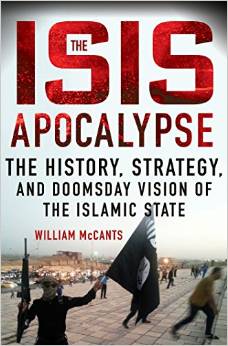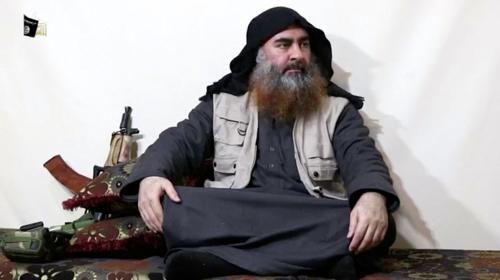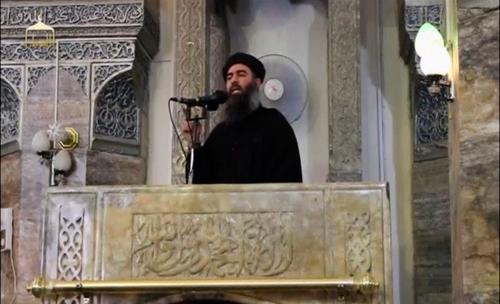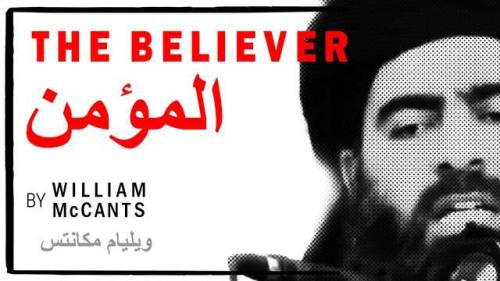The details surrounding the U.S. raid that led to the death of Islamic State leader Abu Bakr al-Baghdadi present an opportunity to gain a deeper understanding of the capabilities of the U.S. intelligence community and its special forces.
On October 26, helicopters carrying between 50 and 70 members of the U.S. Army Delta Force landed on al-Baghdadi’s compound by the town of Barisha in northwest Syria. With military jets circling overhead, the commandos blew a hole in the complex wall (avoiding a likely booby-trapped door), starting a firefight in which five residents were killed and two taken prisoner. Baghdadi was left inside trying to escape through a tunnel. With a Delta dog in pursuit, the world’s most wanted man detonated his suicide vest, killing two children along with him. After vital ISIS documents and electronics were collected, the compound was destroyed in an airstrike to prevent it from becoming an extremist shrine. The man who built a caliphate and inspired millions of followers worldwide reportedly spent his last minutes crawling from a dog in a lowly ditch.
The chain of events indicates how America still reigns supreme in many aspects of espionage, intelligence, and special operations work. As in any art, spycraft included, it often takes a well-trained eye to notice the exceptional hues and undertones that make a particular work striking. Just as it may take an art historian to explain why a famous work of art is so valuable, so too the quality of a clandestine operation is more acute to an intelligence expert.
Writing about intelligence cases is tricky business. We often study intelligence failures, and for every achievement there are numerous unknown disappointments and missed opportunities. Even though there is likely bias in the way an intelligence entity tells the story afterward, there is still much we can learn.
From what we know of the Baghdadi raid, three dimensions of the intelligence work stand out in particular: collection, cooperation, and operational capability.
Intelligence collection
An Islamic State defector reportedly provided, via clandestine communication, a room-by-room description of the building in which Baghdadi was hiding, as well as the leader’s personal items, including underwear. An informant accessible to the top rank of such a radical organization is a very rare asset, all the more so when that leader stuck to the strictest safety measures in his final years.
The identification process that confirmed Baghdadi’s presence before the operation — using evidence provided by the mole — and during the operation with the use of sophisticated DNA analysis signals technology capabilities few agencies possess.
A raid of this sort requires a thorough understanding of the target’s whereabouts and the obstacles commandos will encounter. It appears the forces knew what to expect, and how to fulfill the mission expediently. The deployment of dogs may indicate that they were prepared to confront obstacles in close quarters. This operation would likely not have succeeded were it not for for the ability to translate the information gathered into actionable operational intelligence, which supported the decisions in the planning and execution phase of the operation.
In addition to human intelligence, intelligence gathering by signal interception (signal intelligence) and visual intelligence were likely implemented. This operation could not have been conceived or carried out without all three working in harmony; moreover, we know from reporting in the aftermath of the raid that aerial photographs, satellites, aerial reconnaissance, and detailed maps of signals and potential communication lines in the entire region (and specifically of the compound) all contributed to the effort. That ability to harmonize is challenging, and a mark of excellence for any intelligence agency. While the work of the informant might have initially triggered the operation, it is the use of satellites and drones at different altitudes that likely allowed the operation to be authorized and confirmed the target while the forces were in transit.
International cooperation
Baghdadi was found in Idlib, one of the most complex, war-ridden regions in Syria and probably in the entire Middle East. It’s nearly impossible to covertly operate in an area where Syrian forces backed by Russian troops are besieging a mix of jihadi organizations. The U.S. demonstrated that it can stretch a long operational arm anywhere and, according to President Trump, secure cooperation from allies and adversaries alike: Russia, Turkey, Syria, Iraq, and the Syrian Kurds. Cooperation is challenging, as costs and benefits do not always align between parties. America’s ability to get such cooperation is a sign of leadership and influence. Also according to President Trump’s remarks, partner countries did not have specific details of the mission, which makes it harder to gain their assistance and secrecy. If trust was not a factor in the equation, then power probably helped secure their consent.
Cooperation with adversaries is particularly costly for two major reasons. Enemy intentions vis-à-vis the target are never fully known, and therefore collaboration is a major risk that can lead to premature exposure of the operation. Further, any cooperation with an adversary presents a learning opportunity about U.S. sacred sources and methods for its adversary, providing the “frenemy” with the opportunity to use the lessons learned to counter U.S. efforts against them in the future.
Finally, contact with a key informant has no substitute, and in the case of the Baghdadi operation, U.S. cooperation with the Syrian Democratic Forces was critical — and the culmination of five years of strategic collaboration and trust building. Even with great technological sophistication, the U.S. needs committed partners on the ground with access to the field and the local population.
Operational capability
From the details released thus far, it seems the operation proceeded as planned — though, according to some press reports, perhaps complicated by the sudden withdrawal of U.S. forces from northeastern Syria — and with only minor contingencies, a sign of U.S. special forces’ skill. Preserving the element of surprise is crucial, as is careful planning: Improvisation and unexpected scenarios are the mothers of many failed missions. Given the final phase in the tunnel, when Baghdadi detonated his suicide vest, the raid likely caught him by surprise and his contingency plan to barricade himself, flee, or hide in the tunnel failed. The forces did well in confirming the completion of the mission with the DNA samples and retrieving sensitive material in the face of the increased risk that comes with more time on the ground. By confirming Baghdadi’s identity, ISIS was forced to acknowledge his demise.
Collateral damage was proportional and reasonable, which indicates that U.S. forces followed strict rules of engagement to minimize civilian casualties, despite the significant risk. American commandos allegedly called out encouraging people to emerge from the compound peacefully, which may have helped 11 children escape unharmed. The lack of American casualties also demonstrates the level of detailed intelligence and preparedness.
There is an intelligence cycle standard called “Find, Fix, Finish,” and meeting that standard is a true measure of the U.S. intelligence community’s professionalism. U.S. intelligence determined Baghdadi’s location (the Find) that allowed it to set in motion such an operation. By fusing various intelligence capabilities, verification of Baghdadi’s identity and his location enabled the translation of the Find into a feasible action plan (the Fix). Finally, based on the evidence from the two earlier phases, Baghdadi — despite precautionary measures and eight years of experience evading capture or death — was killed (the Finish).
Final thoughts
Beyond the political rhetoric, Abu Bakr al-Baghdadi’s death is, more than anything, a testament to American determination. It is of major moral significance and exemplifies a meaningful milestone in ISIS’s demise.
Since 9/11, America has targeted several al-Qaida leaders. The highest-profile target, Osama bin Laden, was killed in a May 2011 raid. The United States also killed Abu Musab al-Zarqawi, leader of al-Qaida in Iraq, in 2006; and in November 2002, a U.S. drone killed Qaed Salim Sinan al-Harethi, al-Qaida leader in Yemen who was implicated in the bombing of the U.S.S. Cole. Muhammad Atef, al-Qaida’s military chief, was killed in a drone attack in Afghanistan in October 2001.
The raid that killed Baghdadi is a reminder of America’s commitment to protect vital interests and neutralize what it deems to be a strategic threat in the region.
In contrast, Russia, Turkey, and even Syria were probably oblivious to Baghdadi’s presence under their noses. When it comes to the war on terror, America is still the world’s foremost policeman.
Baghdadi’s successor has already been named and the fight against the Islamic State, as most experts assert, is far from over. The war on terror is a war of attrition, an ongoing struggle that will certainly not end here. And yet, this raid is not just another milestone, but rather a message to U.S. allies and enemies alike of American power and resolve.









Commentary
What we can learn about US intelligence from the Baghdadi raid
November 6, 2019